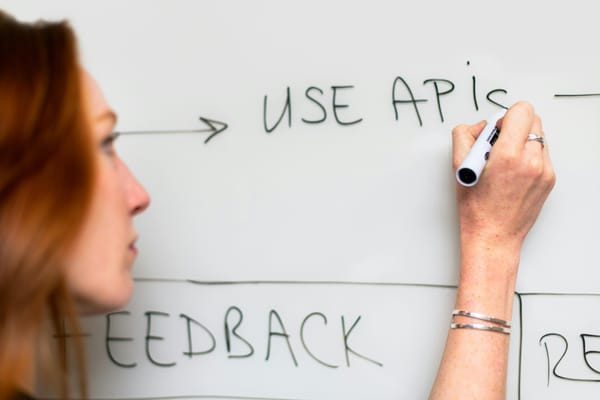AWS Bedrock Knowledgebase

Amazon Bedrock: Building Generative AI Solutions
Introduction
Amazon Bedrock is a comprehensive, fully managed service designed to facilitate the development of generative AI solutions and applications. It ensures security, privacy, and adherence to responsible AI practices while offering:
- Access to a selection of top-performing foundation models (FMs) from prominent AI companies
- Uniform APIs for seamless integration
- A complementary set of capabilities to enhance your AI projects
Amazon Bedrock Knowledge Base: Key Use Cases
Building Domain-Specific Virtual Assistants
Create intelligent chatbots for customer service that understand industry-specific terminology and provide accurate responses. For example, develop virtual assistants for healthcare providers that can answer patient queries about medical procedures, medications, and appointment scheduling.
Intelligent (Re)Search Systems
Implement smart search engines for corporate intranets that can understand natural language queries and retrieve relevant documents, policies, and procedures. This enhances knowledge management systems in enterprises by allowing employees to find information quickly and accurately.
Developing Systems for Customer Support
Build AI-driven question-answering systems that can handle a wide range of customer inquiries, reducing the need for human intervention. Create self-service portals where customers can get instant answers to common questions about products, services, and policies.
Recommender Systems
Improve e-commerce platforms by recommending products based on user queries and past interactions, leading to increased sales and customer satisfaction. Similarly, develop personalized learning systems in education that recommend courses, articles, and resources based on student interests and progress.
Additional Applications
- Intelligent Tutoring Systems: Create AI-driven tutoring systems for personalized learning experiences
- Legal Research: Build tools that search through vast amounts of legal documents efficiently
- E-Learning Platforms: Develop platforms providing instant answers to students' questions
- Technical Documentation: Implement systems that respond to technical queries with clear explanations
- Customer Onboarding: Create interactive guides for new users
- Market Research: Analyze trends and provide insights for strategic decision-making
By leveraging Amazon Bedrock Knowledge Base, organizations can create sophisticated, AI-powered applications that offer accurate, relevant, and context-aware responses, enhancing user experiences across various domains.
Introduction to RAG Architecture: Powering Knowledge Bases
The Amazon Bedrock Knowledge Base is built on a powerful AI architecture called Retrieval-Augmented Generation (RAG). This architecture addresses one of the fundamental challenges with traditional Large Language Models (LLMs): combining the reasoning capabilities of AI with accurate, up-to-date information from trusted sources.
What is RAG and Why It Matters
RAG combines two critical capabilities:
- Retrieval: The ability to search through and identify relevant information from a custom knowledge base
- Generation: The capability to synthesize this retrieved information into coherent, contextually appropriate responses
This architecture provides several key advantages for knowledge-based applications:
- Enhanced Accuracy: By grounding responses in specific documents rather than relying solely on pre-trained knowledge
- Reduced Hallucinations: Minimizing the risk of AI generating plausible but incorrect information
- Customization: Tailoring responses to your organization's specific knowledge domain
- Transparency: Providing clear references to information sources
- Currency: Ensuring answers reflect the most recent information in your knowledge base
The RAG architecture is what enables Amazon Bedrock Knowledge Base to deliver accurate, relevant, and trustworthy responses across all the use cases described above. Instead of simply generating text based on patterns learned during training, RAG-powered applications first retrieve relevant information and then generate responses based on that specific content.
Understanding RAG Architecture: The Library Analogy
Imagine a modern library system with three key components that mirror how a Retrieval-Augmented Generation (RAG) system functions:
- A researcher who creates final reports (similar to the Large Language Model)
- A skilled librarian who classifies content (comparable to the Embedding Model)
- An advanced robotic shelving system (functioning like the Vector Database)
The Knowledge Processing Workflow
When new content arrives at our digital library:
-
The Librarian (Embedding Model) analyzes each piece and assigns a unique classification code based on its content, themes, and subject matter—similar to a Dewey Decimal system.
-
The Robotic Shelving System (Vector Database) stores this classified content precisely according to its classification code, ensuring that similar content is grouped together for efficient retrieval.
The Knowledge Retrieval Process
When a user needs information:
-
The user submits a question or research request.
-
The Librarian analyzes this query and translates it into the same classification system, determining which "section" of the library would contain relevant information.
-
The Robotic System receives these classification codes and retrieves all potentially relevant content from those sections.
-
The Researcher (Large Language Model) examines all the retrieved content, analyzes its relevance and accuracy, and synthesizes the information into a comprehensive response that addresses the user's question.
-
The final response includes proper citations that reference specific sources, maintaining intellectual integrity and allowing for verification.
This system combines efficient automated storage and retrieval with sophisticated analytical capabilities—just as RAG combines vector databases for retrieval with language models for generation.
RAG System Components in Detail
Data Sources
Various repositories provide materials to the RAG system, including:
- S3 Buckets (cloud storage)
- Confluence (company wikis)
- SharePoint (document management systems)
In our library analogy, these represent the diverse sources that supply materials to the library.
Data Ingestion Pipeline
This event-driven process activates whenever new content becomes available. Rather than checking periodically for updates, the system responds immediately when new content appears—similar to how library staff would process new arrivals as soon as they're delivered.
Parsing: Preparing Documents for Processing
Parsing breaks down documents into usable pieces that can be properly stored and later retrieved.
In our library analogy:
- Document Processing: Staff examine each new document to understand its structure
- Content Extraction: They identify and separate tables of contents, chapter headings, paragraphs, and other elements
- Structure Identification: They determine where sections begin and end, distinguishing titles from main content and supplementary information
Why parsing matters in RAG systems:
- Enables effective chunking of documents into logical segments
- Facilitates metadata extraction (titles, authors, dates, categories)
- Maintains contextual relationships between different parts of a document
- Produces cleaner text for generating quality vector embeddings
Without proper parsing, your RAG system would be like a library with pages randomly torn from books and shelved without understanding their content or relationships.
Chunking: Dividing Content into Manageable Pieces
Chunking is like dividing a long book into chapters and sections to make specific information easier to find. Instead of searching through an entire book, you can go directly to the relevant chapter.
Types of chunking in RAG systems:
-
Default Chunking
- Automatically breaks documents into ~300-word pieces
- Maintains sentence integrity for coherence
- Best for: Simple, no-configuration approaches
-
Fixed-Size Chunking
- Creates pieces of precisely defined size
- Allows custom configuration of chunk size and overlap
- Best for: Applications requiring consistent-sized pieces across documents
-
Hierarchical Chunking
- Creates "parent-child" relationships with larger sections and smaller sub-sections
- Best for: Cases requiring both broad context and specific details
-
Semantic Chunking
- Divides documents based on meaning and topics rather than size
- Groups related content together, regardless of chunk size consistency
- Best for: Applications where topic coherence matters more than uniform size
-
No Chunking
- Keeps each document as a single piece
- Best for: Already short documents or pre-divided content
Well-implemented chunking helps your RAG system find specific information quickly, provide contextually appropriate answers, optimize resource usage, and improve response accuracy.
Vector Embeddings: Creating Mathematical Representations
The librarian's classification method creates sophisticated mathematical representations of content meaning. Instead of simply noting "this is about physics," the system captures the conceptual essence of each piece in a format that allows for nuanced similarity comparisons.
An embedding Large Language Model (LLM) transforms text into vector representations—mathematical entities that encode meaning. These vectors enable the system to efficiently compare and identify similarities between different content pieces, allowing for precise and contextually relevant retrieval.
Vector Database Storage: Organizing by Semantic Fingerprints
The robotic shelving system organizes materials by their semantic fingerprints. Items with similar meanings are stored near each other, even if they use different terminology. This enables efficient retrieval of conceptually related information.
Popular vector database options include:
- AWS OpenSearch Serverless (AOSS)
- Pinecone
- PostgreSQL with PgVector extension
The Complete Retrieval and Generation Process
When a user submits a question:
-
The Embedding Model analyzes the question and converts it into the same vector representation used for the stored documents.
-
The Vector Database searches through its collection, identifying documents with similar vector representations.
-
The system retrieves the most relevant documents based on vector similarity scores.
-
The Large Language Model receives both the original question and the retrieved documents.
-
Instead of answering solely from memory, the LLM studies the retrieved information for facts and details relevant to the question.
-
The LLM crafts a comprehensive answer that integrates:
- Its general knowledge and reasoning abilities
- Specific facts and information from the retrieved documents
-
The final response includes references to the specific sources used, ensuring transparency and verifiability.
Conclusion
This combined approach produces answers that are:
- Factually grounded in specific documents rather than potentially hallucinated
- Up-to-date with the latest information added to the system
- Relevant to the specific question asked
- Traceable to their original sources
- Comprehensive, benefiting from both broad knowledge and specific information
Just as our library researcher provides better answers when equipped with relevant books than when relying solely on memory, a RAG system delivers more accurate, reliable, and specific responses than a standalone language model. Amazon Bedrock Knowledge Base leverages this powerful RAG architecture to enable all the enterprise use cases described above, helping organizations transform their internal knowledge into intelligent, interactive systems that deliver precise, contextual responses.




